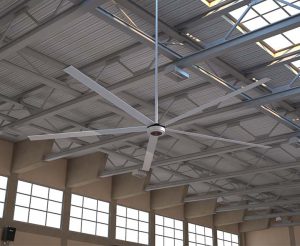Struggling with stuffy air, soaring energy costs, or outdated fixtures ruining your space’s look? It’s frustrating when discomfort hits productivity and old Deckenventilatoren clash with modern aesthetics, making rooms feel dated and inefficient. Upgrade to solutions that blend style, smart tech, and savings.
The dominant ceiling fan trends for 2025 focus on smart home integration for convenience, enhanced energy efficiency via DC motors, minimalist and sleek designs often featuring matte black finishes and clean lines, larger blade spans for better airflow, integrated LED lighting, and a growing preference for stylish, durable outdoor ceiling fans. These trends collectively prioritize functionality, aesthetic appeal, and sustainability in modern air circulation.

Ceiling Fan Trends 2025
The humble Deckenventilator has undergone a remarkable transformation. Once purely utilitarian devices, ceiling fans today are integral components of interior design, blending advanced technology with sophisticated aesthetics. As manufacturers specializing in large-scale air movement solutions like HVLS fans, we closely monitor these design trends because the core principles – efficiency, Luftstrom, and user comfort – apply across all scales, from a residential bedroom to vast warehouses. Understanding what’s trending helps everyone make informed choices, whether for a modern home or a large commercial facility. The latest ceiling fan trends show a clear move towards smarter, sleeker, and more sustainable options.
Modern ceiling fan design in 2025 is characterized by minimalism and clean lines. Think sleek, unobtrusive profiles that blend seamlessly into the contemporary ceiling. Ornate details and bulky housings are out; simple geometric forms and smooth finishes are in. This modern style often incorporates fewer blades – sometimes just two or three – contributing to a lighter, more architectural look without sacrificing performance. The focus is on a design aesthetic that complements modern and transitional home design rather than dominating the space.
Materials and finishes also play a crucial role. Matte black remains incredibly popular, offering a bold yet versatile look. Brushed nickel, graphite, and white finishes are also prevalent, providing options that fit various color palettes. We’re also seeing mixed materials, like wood-finished Klingen paired with metallic housings, adding warmth and texture. This evolution reflects a broader trend In interior design towards curated, intentional choices where every fixture, including the Deckenventilator, contributes to the overall design style. Ceiling fans have evolved significantly, becoming statement pieces.
Smart home integration is arguably one of the most significant ceiling fan trends. Intelligente Deckenventilatoren offer unparalleled convenience and control. Imagine adjusting your Lüftergeschwindigkeit or lighting using voice commands via Amazon Alexa oder Google Home, or setting schedules through a smartphone app. This level of home automation means you can optimize comfort and Energieverbrauch effortlessly. For instance, you can program fans to turn on before you arrive or link them to smart thermostats for coordinated climate control.
Das smart home capability extends beyond simple on/off functions. Many smart fans allow precise control over speed settings, light color temperature, and even reversibel motor direction for year-round comfort – all accessible via Wi-Fi. This technology is particularly beneficial in larger spaces or commercial settings where manual adjustments are impractical. As manufacturers, we see the demand for smart technologies growing, reflecting a desire for more connected and responsive environments. These ceiling fans with smart features represent a major leap in user experience, making climate control intuitive and efficient. Fans bieten a new level of interaction within smart home systems.
Absolut. Energieeffizienz is no longer just a bonus feature; it’s rapidly becoming a standard expectation, driven by both environmental awareness and the desire to reduce operating costs. The key technology behind this trend is the DC (Direct Current) motor. Fans with DC motors use significantly less energy – up to 70% less – than traditional AC (Alternating Current) motors. This translates directly into lower electricity bills, a major consideration for homeowners and especially for businesses operating multiple or large-scale fans.
Beyond cost savings, DC motors offer other advantages contributing to their popularity. They tend to have more speed options, often six or more compared to the typical three of AC motors, allowing for finer control over Luftstrom. They also boast incredibly quiet operation, eliminating the distracting hum associated with older or noisy ceiling units. Many energieeffizient models also carry the Energy Star certification, providing further assurance of their performance and savings. The push towards sustainability and operational efficiency makes energy efficient ceiling fans, particularly those fans with DC motors, a dominant force in the current market. This focus on Energieverbrauch is critical in crafting fans for the modern era.
Entwurf der Klinge has moved far beyond just function; it’s a key aesthetic element in contemporary ceiling fan styles. The number, shape, and material of the Lüfterflügel significantly impact the overall look. As mentioned, fewer blades (two or three) are common in modern design, creating a minimalist feel. However, designs with five or more blades are still popular, especially for those seeking a more traditional or transitional look. The Klingenentwurf itself is often sleeker, with subtle curves or straight, clean edges replacing the overly detailed patterns of the past.
Materials are also diversifying. While traditional wood and plastic Klingen remain, we’re seeing more metal finishes and even blades designed to look like reclaimed wood or specific natural materials. The span or diameter of the Klingen is also part of the design consideration, aligning with the Größe des Deckenventilators needed for the room. Larger diameter fans (60 inches or more) are trending, not just for large rooms but as intentional design style choices in spaces like great rooms or living rooms. Der Lüfterflügel is now a critical part of the Deckenventilator-Design statement.
Der trend towards enhancing outdoor living spaces has fueled a surge in demand for Deckenventilatoren für den Außenbereich. Patios, porches, gazebos, and pergolas are increasingly seen as extensions of the indoor living space, and homeowners want the same level of comfort and style outside. An Deckenventilator für den Außenbereich makes these areas more usable during warmer months by creating a cooling breeze and deterring insects.
Im Gegensatz zu indoor fans, Deckenventilatoren für den Außenbereich are built to withstand the elements. They are typically “damp-rated” for covered areas like porches or “wet-rated” for locations directly exposed to rain. These ratings ensure the fan’s motor and finishes resist moisture, humidity, and temperature fluctuations. Design trends für outdoor ceiling models mirror indoor styles, offering sleek, modern, rustic, and traditional options, often incorporating integrated LED light fixtures. This allows for a cohesive design flow between indoor and outdoor spaces. Der versatility and comfort provided by a dedicated Deckenventilator für den Außenbereich make it a popular addition to modern home exteriors.

hvls fan in open-concept
Ja, multi-functional ceiling fans that combine air circulation with lighting are not just common; they are increasingly sophisticated. The integration of LED light kits is now almost standard, and the technology has advanced significantly. Modern ceiling fans and lighting fixtures offer dimmable LEDs, adjustable color temperatures (from warm white to cool white), and higher lumen outputs, effectively replacing the need for a separate overhead light fixture.
This integration contributes to the sleek, uncluttered look favored in contemporary ceiling design. Instead of having both a Deckenventilator and a separate light fixture, you get both functions in one streamlined unit. Some new ceiling fans even feature innovative lighting designs, like edge-lit panels or uplighting features, adding ambient light to the room. This combination of functionality enhances the versatility of the Deckenventilator, making it a practical and stylish choice for almost any room, including bedrooms, living space, and kitchens. Deckenventilatoren Angebot integrated solutions for modern needs.
Ceiling fan size Und Luftstrom are fundamentally important, arguably more so than aesthetics, although the latest trends successfully merge both. Choosing the correct size Deckenventilator for your room ensures optimal air circulation. A fan that’s too small won’t effectively zirkulieren air, while one that’s too large might create an uncomfortable draft in a small space. Reputable manufacturers provide guidelines based on room square footage to help select the appropriate diameter (Größe des Deckenventilators).
Luftstrom, measured in cubic feet per minute (CFM), indicates how much air the Fan-Bewegungen. Higher CFM generally means better circulation, but efficiency (CFM per watt) is also crucial for Energieeffizienz. Factors influencing Luftstrom include motor power (DC motors often provide good torque), Klinge pitch (the angle of the Klingen), and overall Lüfterdesign. While stylish ceiling fans are desirable, performance remains key. Even in large industrial settings, like those using HVLS-VENTILATOREN FÜR LAGER, the principles of matching size and Luftstrom to the space are paramount for effectiveness.
As mentioned, matte black continues its reign as a top trending finish, valued for its versatility and ability to complement various design styles. However, other finishes are also gaining traction. Graphite and pewter offer softer alternatives to black, while brushed nickel and chrome provide a classic modern look. White Deckenventilatoren remain popular for blending seamlessly with white ceilings, creating an unobtrusive feel.
Beyond metals, wood finishes are prominent, ranging from light, natural tones to rich walnuts and even weathered looks, often seen on the Klingen. This brings natural warmth and texture, aligning with biophilic design trends. We’re also seeing mixed-media designs – for example, a metallic housing paired with wooden Klingen. The choice of material impacts not only the look but potentially the fan’s suitability for different environments (e.g., corrosion resistance for outdoor ceiling models). These choices when it comes to finishes allow for greater personalization.
Undoubtedly. A stylish ceiling fan can absolutely elevate your space, acting as a functional centerpiece. Gone are the days when Deckenventilatoren were purely practical afterthoughts. Ceiling fans today are designed with aesthetics at the forefront, capable of enhancing or even defining a room’s design style. A sleek, modern ceiling fan can update a dated room, while a fan with rustic elements can perfectly complement a farmhouse aesthetic.
Think of the Deckenventilator as you would any other significant fixture, like a chandelier or pendant light. Choosing a Lüfterdesign that aligns with your interior design vision contributes to a cohesive and polished look. Brands like Casablanca Fans and even mainstream lines like Hunter Fan offer a wide array of ceiling fan styles designed to make a statement. The right contemporary ceiling fan adds a layer of sophistication and intentional design, helping to transform your home or commercial space. It’s an opportunity to merge comfort with high design.
Bevor Sie einen Deckenventilator installieren, several factors need consideration to ensure safety, performance, and satisfaction. First, confirm your ceiling height. Standard Deckenventilatoren require a minimum height, typically 7 feet from the floor to the Klingen, for safety. Low-profile or hugger mounts are available for lower ceilings. Second, check the electrical box in your ceiling. It must be rated to support the weight and vibration of a Deckenventilator; a standard light fixture box is often insufficient. You might need a new ceiling box installed or reinforced.
Consider the room size to select the appropriate Größe des Deckenventilators (diameter) for optimal Luftstrom. Think about functionality: Do you need integrated lighting? Do you want remote control oder smart home capabilities? Will it be indoor oder im Freien use (requiring a damp/wet rating)? Finally, consider the installation process itself. While some homeowners DIY ceiling fan installations, hiring a qualified electrician is recommended, especially if wiring modifications are needed. Proper ceiling fan installations are crucial for safety and ensuring the fan remains stable and balanced, preventing wobbling or noisy ceiling operation. These considerations help you finden Sie die perfekte Deckenventilator for your needs. For large scale industrial fans like HVLS-Lüfter der Serie M650, professional installation is always required due to their size and weight.

Are smart ceiling fans worth the investment?
Yes, for many users, smart ceiling fans are worth it. They offer significant convenience through app and voice control (Wi-Fi, Alexa, Google Home), potential Energieeinsparungen via scheduling and integration with smart home systems, and enhanced control over Lüftergeschwindigkeit and lighting. The slightly higher upfront cost is often offset by improved comfort and lower Energieverbrauch im Laufe der Zeit.
What’s the difference between AC and DC motor ceiling fans?
AC (Alternating Current) motors are the traditional type, generally less expensive upfront but consume more energy and offer fewer speed settings (usually 3). DC (Direct Current) motors are newer technology, significantly more energieeffizient (up to 70% less energy), offer more speed options (often 6+), run much quieter, and typically have reversibel direction controlled via remote or app. Fans with DC motors represent a major trend towards efficiency and performance.
How do I choose the right size ceiling fan for my room?
Ceiling fan size is determined by room square footage. General guidelines are:
Can I use an indoor ceiling fan in a covered outdoor area?
No, you should not use a standard indoor ceiling fan outdoors, even if covered. Moisture and humidity can damage the motor and warp the Klingen. Use a “damp-rated” Deckenventilator für den Außenbereich for covered porches or patios, and a “wet-rated” fan for areas exposed directly to rain or snow. Using the correct rating ensures safety and longevity.
What are the benefits of integrated LED lights in ceiling fans?
Integrated LED light fixtures in Deckenventilatoren offer several benefits: Energieeffizienz (LEDs use less power than traditional bulbs), long lifespan (reducing replacement frequency), dimmability, often adjustable color temperature, and a streamlined aesthetic by combining two fixtures (ceiling fans and lighting) into one. They provide effective primary or supplemental lighting for the living space.
Do modern ceiling fans make less noise?
Yes, generally moderne Deckenventilatoren, especially those with high-quality DC motors, are significantly quieter than older models. Improved motor technology, better balancing, and aerodynamic Klingenentwurf beitragen zu quiet operation, minimizing the humming or mechanical noises sometimes associated with Deckenventilatoren. This makes them ideal for bedrooms and other quiet areas.
As experts in air movement technology, from sophisticated commercial building solutions to robust agricultural fans, we understand the importance of combining performance with modern demands. The latest trends In Deckenventilatoren reflect a move towards smarter, more efficient, and aesthetically pleasing designs that enhance comfort and style in any environment. Whether you’re upgrading your home or optimizing a large facility, embracing these trends can lead to significant improvements in comfort and energy usage. For insights into larger scale solutions, explore Alles, was Sie über Hochleistungs-Lüfter mit niedriger Geschwindigkeit wissen müssen.
Considering an upgrade focused on maximum efficiency and air movement for a larger space? While residential trends focus on style and smart features, industrial applications prioritize robust performance and energy savings. As manufacturers of HVLS (High-Volume, Low-Speed) fans, we specialize in solutions designed for factories, warehouses, gyms, and other large facilities. Our fans (like the M750 Series) embody the principles of Energieeffizienz (using advanced DC motors) and optimal Luftstrom on a grand scale. If you’re looking to improve comfort and reduce energy costs in a commercial or industrial setting, contact Vindus Fans today to discuss how our specialized solutions can meet your needs.
Key Takeaways on 2025 Ceiling Fan Trends:

Hallo, ich bin Michael Danielsson, CEO von Vindus Fans, mit über 15 Jahren Erfahrung in der Ingenieur- und Designbranche. Ich bin hier, um mein Wissen weiterzugeben. Wenn Sie Fragen haben, können Sie mich jederzeit kontaktieren. Lassen Sie uns gemeinsam wachsen!